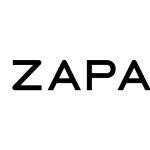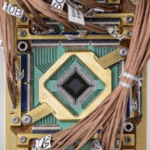Quantum News Briefs December 29: Memo (M-23-02): One step closer to securing our nation from the quantum threat; Terra Quantum simplifies evaluation of quantum computers for industrial application with comprehensive benchmark of quantum computing platforms; Quantum Computing on Tech Byte’s 5 biggest tech trends of 2022 + MORE

Quantum News Briefs December 29 begins with ‘Memo (M-23-02): One step closer to securing our nation from the quantum threat” followed by “Terra Quantum simplifies evaluation of quantum computers for industrial application with comprehensive benchmark of quantum computing platforms’. Third is Quantum Computing on Tech Byte’s 5 biggest tech trends of 2022 + MORE
*****
Memo (M-23-02): One step closer to securing our nation from the quantum threat
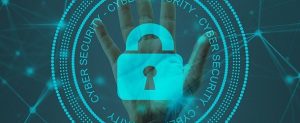 Skip Sanzeri, founder, board chair and COO of QuSecure, opens his recent Forbes article by making the future quantum threat personal: He reminds readers that most of our decisions, behaviors, preferences and locations are now stored in vast databases that are accessible via the internet to adversarial nation-states and nefarious individuals. Today, with every click, swipe or audible word, we are continually adding to the mountain of data and personal information already stored electronically. To make things worse, the future will offer us unrefusable deals to create even larger digital shadows for machine learning and (eventually) AI to process.
Skip Sanzeri, founder, board chair and COO of QuSecure, opens his recent Forbes article by making the future quantum threat personal: He reminds readers that most of our decisions, behaviors, preferences and locations are now stored in vast databases that are accessible via the internet to adversarial nation-states and nefarious individuals. Today, with every click, swipe or audible word, we are continually adding to the mountain of data and personal information already stored electronically. To make things worse, the future will offer us unrefusable deals to create even larger digital shadows for machine learning and (eventually) AI to process.
To date, the encryption we use to protect our data and communications has held up to a great extent. Since this encryption was designed to thwart data decryption by the types of computers we use today, it’s done a reasonable job of protecting us from theft and harm.
However, now we have a new threat in from quantum computers have been proven mathematically via an algorithm designed by Peter Shor that they will crack the current encryption we all use globally to access the internet.
Sanzeri’s good news is that the US Government has come to the rescue: On November 18, the Office of Management and Budget published a mandate for our federal government to start an upgrade to quantum-safe cryptography (this is software that can withstand a quantum computing attack). The memo (M-23-02) requires that federal agencies comply with the National Security Memorandum 10 (NSM 10) from May 2022, which is designed to promote U.S. leadership in quantum computing while mitigating risks to cryptographic systems. The memo asks that federal agencies prepare immediately for the threat posed by a cryptographically relevant quantum computer (CRQC). M-23-02 is mandating federal agencies to start the upgrade process now to secure their data so that even if it is stolen, it has quantum protection, which means it could remain encrypted and non-accessible for decades. OMB has set a deadline for all federal agencies to submit their CRQC vulnerability inventories by May 4, 2023—and annually until 2035, focusing on high-value assets and high-impact systems. Each agency must identify a migration lead and submit them to OMB within 30 days of the memo or by December 18, 2022. Click here to read Sanzeri’s complete article.
*****
Terra Quantum simplifies evaluation of quantum computers for industrial application with comprehensive benchmark of quantum computing platforms
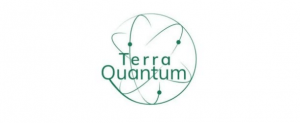 Terra Quantum recently announced that it has conducted a comprehensive benchmark of publicly available simulated and native quantum computing platforms. Quantum News Briefs summarizes the announcement .
Terra Quantum recently announced that it has conducted a comprehensive benchmark of publicly available simulated and native quantum computing platforms. Quantum News Briefs summarizes the announcement .
The goal of the study was to investigate how the prediction accuracy and training time of quantum neural networks can be improved by utilizing a hybrid quantum-classical approach. The benchmark found that the combination of simulated quantum processors and classical high-performance computers delivers the best performing, most cost-efficient, and robust approach.
The first benchmark covers a variety of publicly available native and simulated quantum computing devices (including IonQ, Rigetti, Oxford Quantum Circuits, IBM, QMware and Amazon Braket). As the study was focused on real-life application, it deliberately excluded systems that are exclusive or still at an experimental stage. The benchmarking exercise examined the combination of speed, running cost and result quality of the performance of publicly available quantum computing power. The results demonstrated that a combination of simulated quantum processors and classical high-performance computers (hybrid approach) provided currently the most time- and cost-efficient quantum algorithm training solution. This delivers valuable insights for early industry adopters when evaluating the most efficient use of quantum computing technology. Training the quantum neural networks on a simulated quantum processor avoids the cost-intensive reruns necessitated by frequent calculation errors that arise with native quantum processors. Simulated quantum processors provide up to 40 error-free (so-called algorithmic) qubits, enabling complex quantum-enhanced problem solving today. QMware offers up to 40 and AWS SV1 up to 34 simulated qubits.
“We found that only a combination of simulated or native qubits with classical high-performance computing power delivered competitive runtime results in comparison to purely classical approaches with today’s technologies at hand,” said Georg Gesek, CTO and co-Founder of QMWare. “The benchmark further highlights that training algorithms utilizing simulated qubits prove to be the only commercially viable option today as it they are still cheaper and more accurate compared to using native quantum processors.”
Click here to read announcement in-entirety.
*****
From Quantum Computing to 5G and IoT, 5 biggest tech trends of 2022 | Tech Bytes year-ender
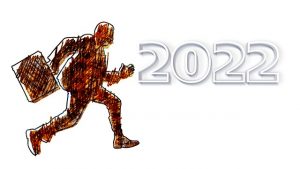 Ishita Banerjee of Tech Bytes’s list of five biggest trends of 2022 includes quantum computing. Quantum News Briefs summarizes below.
Ishita Banerjee of Tech Bytes’s list of five biggest trends of 2022 includes quantum computing. Quantum News Briefs summarizes below.
This year, a lot of major tech trends were seen to come up as well as the existing ones were developed. The five tech trends of 2022, that made themselves the highlight of this year.
Quantum Computing
5G
Robotic Process Automation (RPA)
Edge Computing
Internet of Things (IoT)
Germany’s QUASIM project investigating quantum computers for metal processing
 The QUASIM project, in which Dr. Tobias Stollenwerk from Forschungszentrum Jülich is working together with the German high-tech company Trumpf, is investigating the potential of quantum computers for metal processing. Quantum News Briefs summarizes a recent discussion of the project.
The QUASIM project, in which Dr. Tobias Stollenwerk from Forschungszentrum Jülich is working together with the German high-tech company Trumpf, is investigating the potential of quantum computers for metal processing. Quantum News Briefs summarizes a recent discussion of the project.
Dr. Tobias Stollenwerk explained, “We are concentrating on concrete use cases. One test problem we are investigating with the company Trumpf is the removal of parts during laser cutting. These removal processes often do not run optimally, although these processes are already being optimized today with the help of computer simulations. This is due to the fact that the thermal expansion of the sheets – the laser is very hot – can only be inaccurately taken into account in the previous models. The parts sometimes stick to the sheet after cutting. The machines then have to be stopped to loosen them, which leads to unwanted downtime.
Optimizing the cutting patterns with quantum computing and machine learning could help to increase the efficiency and also the quality of the cuts.”
At the moment, they are still simulating the quantum computers on classical computers. This has the advantage the team can concentrate entirely on the development of the quantum algorithms and have to pay less attention to the peculiarities of current quantum systems, which are typically all still somewhat error-prone.
QUASIM is working together with the German Research Centre for Artificial Intelligence (DFKI), which is coordinating the project, as well as the Fraunhofer Institute for Production Technology (IPT), Trumpf and the software company ModuleWorks in Aachen. Ford and MTU are also involved as associated partners. Stollenwerk’s task is to coordinate the work on the part of Forschungszentrum Jülich. His colleagues Dr. Alessandro Ciani and Sven Danz are carrying out the actual research work and investigate quantum algorithms that could be suitable for manufacturing.
*****
Sandra K. Helsel, Ph.D. has been researching and reporting on frontier technologies since 1990. She has her Ph.D. from the University of Arizona.


















